Embryology: Definition, Steps, Types and Examples
Embryology is the branch of biology that studies the development of embryos from fertilization to birth. It examines how a single-cell zygote transforms into a complex organism through various stages of growth. This field provides insights into the similarities between species, supporting evidence for evolution. In this article, embryology, embryogenesis, fertilisation, cleavage and blastulation, human development, and stages of pregnancy are discussed. Embryology is a topic of the chapter Evolution in Biology.
NEET 2025: Mock Test Series | Syllabus | High Scoring Topics | PYQs
NEET Important PYQ's Subject wise: Physics | Chemistry | Biology
New: Meet Careers360 B.Tech/NEET Experts in your City | Book your Seat now
- What is Embryology?
- What is Embryogenesis?
- Fertilisation
- Cleavage and Blastulation
- Human Development
- Stages of Pregnancy

What is Embryology?
To define embryology, it is a part of science which forms the basis of how life starts and the following growth process. It pictures the process of one fertilised egg into a complex organism consisting of trillions of cells, each specialised to perform programmed functions. The process, in general, has fascinated scientists and other medical professionals. At the same time, it has changed countless lives in the form of advancement in health care reproduction, prenatal care, and developmental biology.
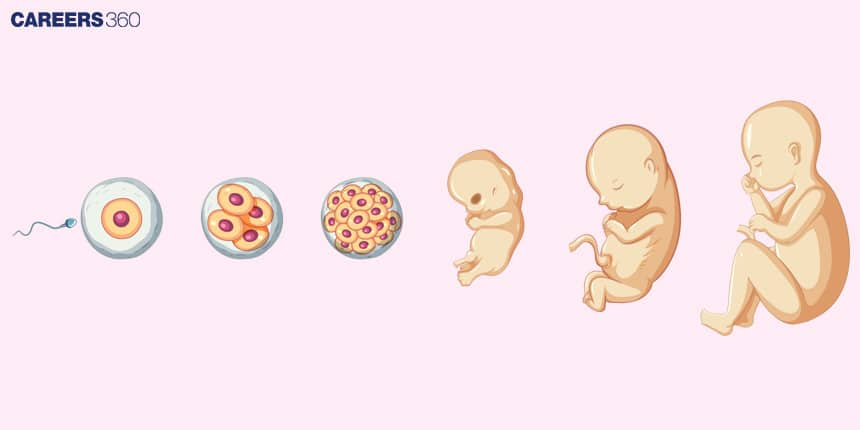
What is Embryogenesis?
Embryogenesis is the process through which a zygote, or fertilised egg, undergoes several cell divisions, growth, and differentiation to develop into a fully formed embryo. This fairly intricate process consists of many stages of development, namely cleavage, blastulation, gastrulation, and organogenesis, to finally form tissues, organs, and structures of the body that are necessary to sustain life. Embryogenesis is essential for the correct development and establishment of the overall plan of an organism's body.
Fertilisation
Fertilisation is the process in which the union of sperm and egg initiates embryonic development to form a zygote. It involves complex interactions between the surfaces of the sperm and egg and the fusion of their genetic material. Then, a diploid zygote is then produced, restoring the full complement of chromosomes.
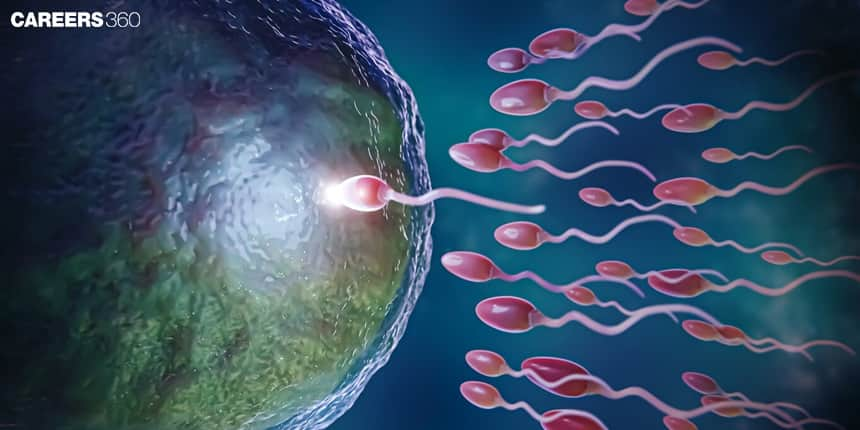
Significance of Fertilisation
Fertilisation restores the diploid number of chromosomes and initiates the developmental processes that will proceed into a new individual. It is essentially the first in a sequence of very closely managed steps by which an embryo grows and develops properly.
Also Read-
- MCQ Practice on Embryology
- Evolution
- Miller Urey Experiment
- Difference between Homologous and Analogous Structures
Cleavage and Blastulation
The cleavage and blastulation process is described below-
Cleavage
The first series of rapid cell divisions that occurs after the moment of fertilisation is called cleavage. No growth in size occurs with cleavage; development essentially starts without an increase in the size of the cells. Instead, the number of cells increases. Cleavage can be holoblastic with the division of the whole egg, or it can be meroblastic with the division of part of the egg only. It may be easier to make sense of the preceding description with a series of diagrams showing these different patterns of cleavage.
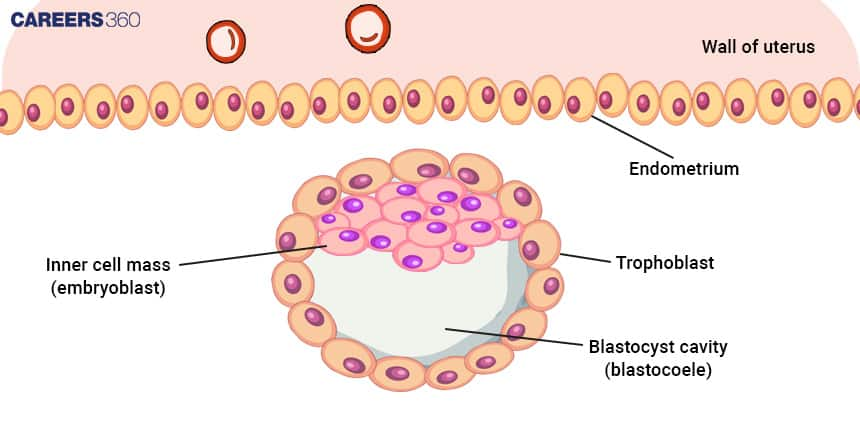
Formation of the Blastula
Through time, these cells grow to be organised into a hollow ball of cells or the blastula, hosting the cavity filled with fluid called the blastocoel. This phase of development follows cleavage immediately, therefore, according to order it is the next stage of development in a developing organism; it is very essential since it lays the foundation for gastrulation upon it sits all future developmental events.
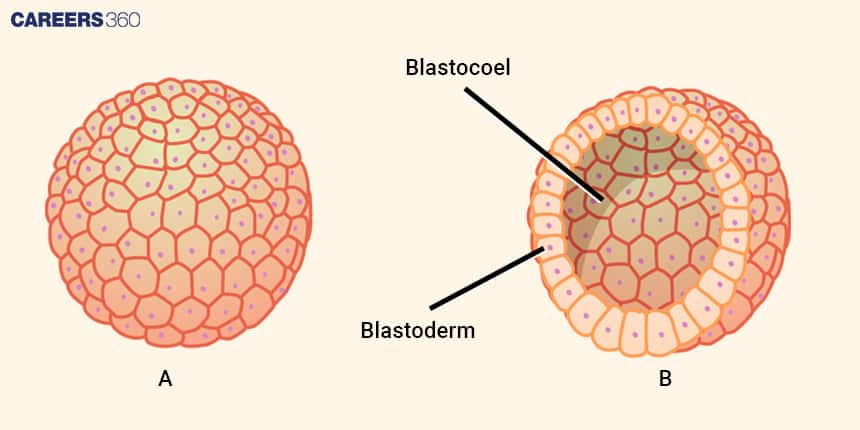
Gastrulation
Gastrulation is a point in embryogenesis when the repositioning of a simple monostratified blastula gives a turn by providing a multilayered structure: gastrula. Simple cell movements give rise to three basic germ layers-the ectoderm, the mesoderm, and the endoderm. This simple process explains some very complex changes that are taking place in the examples which describe gastrulation in different organisms.
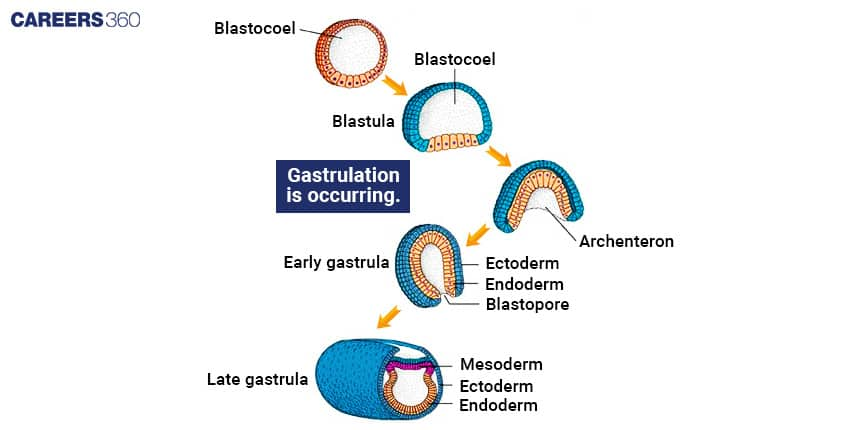
Importance of Gastrulation
Gastrulation is the preparatory step for organogenesis; such determines organ development. It is during this stage that three germ layers form, which will eventually give rise to all tissues and all organs inside the organism's body.
Human Development
The process by which a single cell differentiates and grows into a multicellular human being is extremely intricate and exact. When a sperm fertilises an oocyte (ovum), a zygote is created that differentiates into a definitive organ system and then into its early functional stage, starting a continuous process.
Cell division, migration, proliferation, differentiation, death, and rearrangement are some of the mechanisms of transformation.
Stages of Pregnancy
First trimester (1st 3 months- Week 1-12) — The most prevalent symptoms during this stage are stress, medications, and dietary deficits during and during embryonic development. The "morning sickness" could be nature's attempt to prevent the mother from consuming dangerous foods like raw cabbage, potatoes, coffee, overcooked meat, etc. that could harm the developing embryo.
Second Trimester (2nd 3 months- Week 13-24)- The majority of the organs grow during the second trimester, which is the second three months, from weeks 13 to 24.
Third Trimester (Last 3 months- Week 24-birth)- The baby keeps growing during the third trimester. The infant exhibits a variety of motions, including kicking and stretching. The baby's sense organs undergo significant development during the course of thirty weeks, including the appearance of fingernails, the hardening of bones, the creation of red blood cells (RBC) in the bone marrow, and the eventual shedding of all lanugo.
Also read-
| Embryo Development | Gene Flow |
| Darwin's Contribution: The Theory of Evolution | Genetic Drift |
| Genetic Mutation | Difference between Allopatric and Sympatric Speciation |
Recommended Video for Embryology
Frequently Asked Questions (FAQs)
Fertilisation is when a sperm unites with an egg and gives rise to a zygote. This restores the diploid number of chromosomes and initiates embryonic development that eventually gives rise to a new organism.
Gastrulation forms a gastrula, which has three embryonic germ layers—endoderm, mesoderm, and ectoderm. These germ layers then differentiate themselves to form all the tissues and organs of the organism's body.
Key landmarks of the three trimesters of human fetal development include organogenesis, periods of extraordinary growth, and ground preparation for live birth. Diagrams represent intricate rounds of embryonic development.
Techniques in use within the present-day science of embryology also encompass in vitro fertilisation techniques, genetic manipulation, and new imaging systems, which have been changing the sciences of research on reproductive medicine and the study of developmental biology.
Numerous birth defects include spina bifida and Congenital Heart Defects. The reason can either be Genetic or Environmental. Thus, it has given better management for these conditions.

